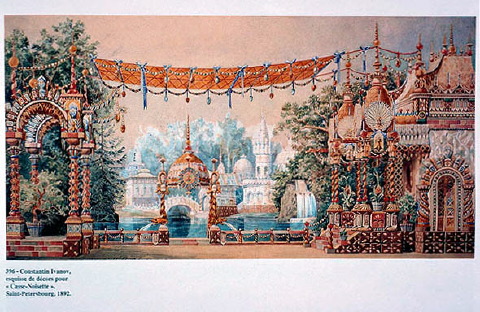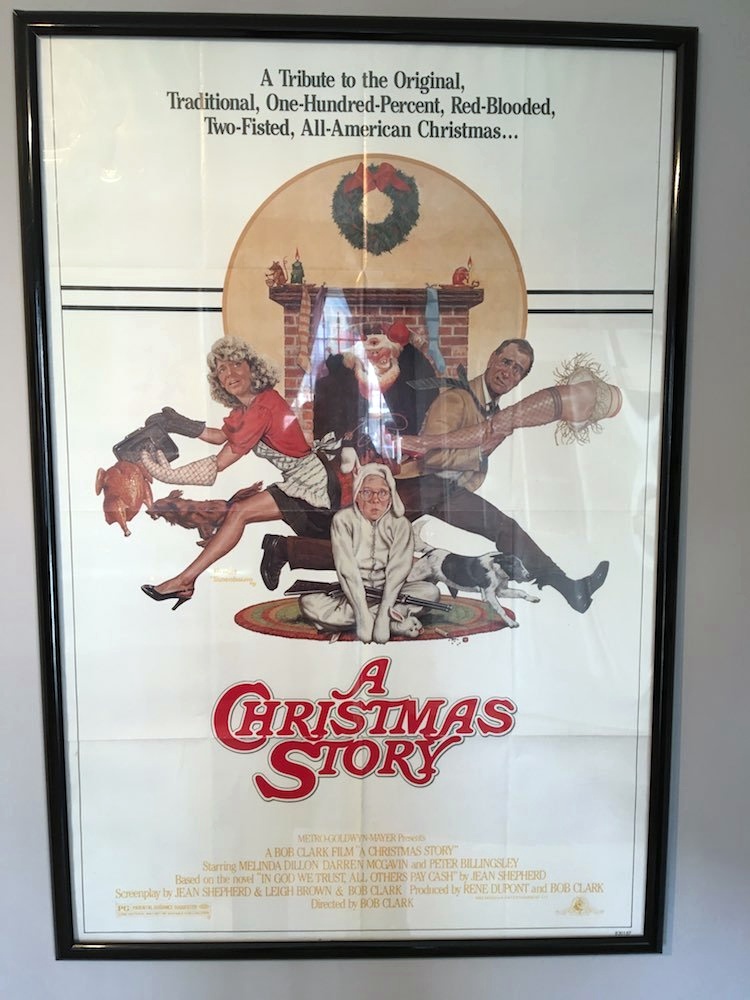by Donna Klein
I love non-commercial radio, which means WCMU where I live. As I was driving earlier this week, the station was conducting a fundraiser for heating assistance. Fundraisers usually mean the more popular selections of classical music are played. It was no surprise that holiday music was the fare of the day, and my ears perked as the first strains of the Dance of the Sugar Plum Fairy from Tchaikovsky’s Nutcracker Suite wafted from the car’s speakers.

Konstantin Ivanov’s original sketch for the set of The Nutcracker (1892)
How many times have I listened to this selection? How many times have I seen the ballet live or on TV? Too many to count. If it is December, then it is Nutcracker season. On this day, my thoughts turned to the history of this traditional holiday symphony and ballet. When was it written? How has the choreography changed over the years? What is the definitive Nutcracker? Inquisitive minds want to know!
The two-act ballet was commissioned after the success of Tchaikovsky’s The Sleeping Beauty in 1890. The Imperial Theatres director asked him to compose a program that included an opera and a ballet. The original choreographer, who collaborated with Tchaikovsky on The Sleeping Beauty, chose Hoffman’s tale, The Nutcracker and the Mouse King, as the backdrop. The story was simplified for adaptation to the stage, and the choreographer, Marius Pepita, provided detailed instructions for the composer.

Ivan Vsevolozhsky’s original costume designs for Mother Gigogne and her Polichinelle children (1892)
The ballet premiered on December 18, 1892 at the Imperial Marlinsky Theatre in St. Petersburg, Russia along with Tchaikovsky’s final opera, Iolanta. The ballet was not very well received, but the 20-minute suite that was extracted from the ballet was a success. The whole ballet has enjoyed tremendous popularity since the late 1960s and has become a staple of ballet companies across North America.
The Nutcracker ballet has been interpreted and reworked over the years. A 1919 production eliminated the Sugar Plum Fairy and her Cavalier. Full and abridged versions have been presented over the years. The two major schools of thought on this ballet are: having adults play the parts of the children, and including children in production. Famous choreographers over the years include Alexander Gorsky, Vasili Vainonen, Alexandra Fedorova, George Balanchine, Rudolph Nureyev, and Mikhail Baryshnikov. In recent years, adaptations have greatly departed from both the original and 1919/1934 interpretations.

Ivan Vsevolozhsky’s original costume sketch for The Nutcracker (1892)
There is no definitive Nutcracker, in my opinion. There are enough productions out there from which to choose each year. I think my favorites include those that have children dancing the younger roles, and the Hot Chocolate Nutcracker, which is an interpretation by Debbie Allen.











Leave A Comment